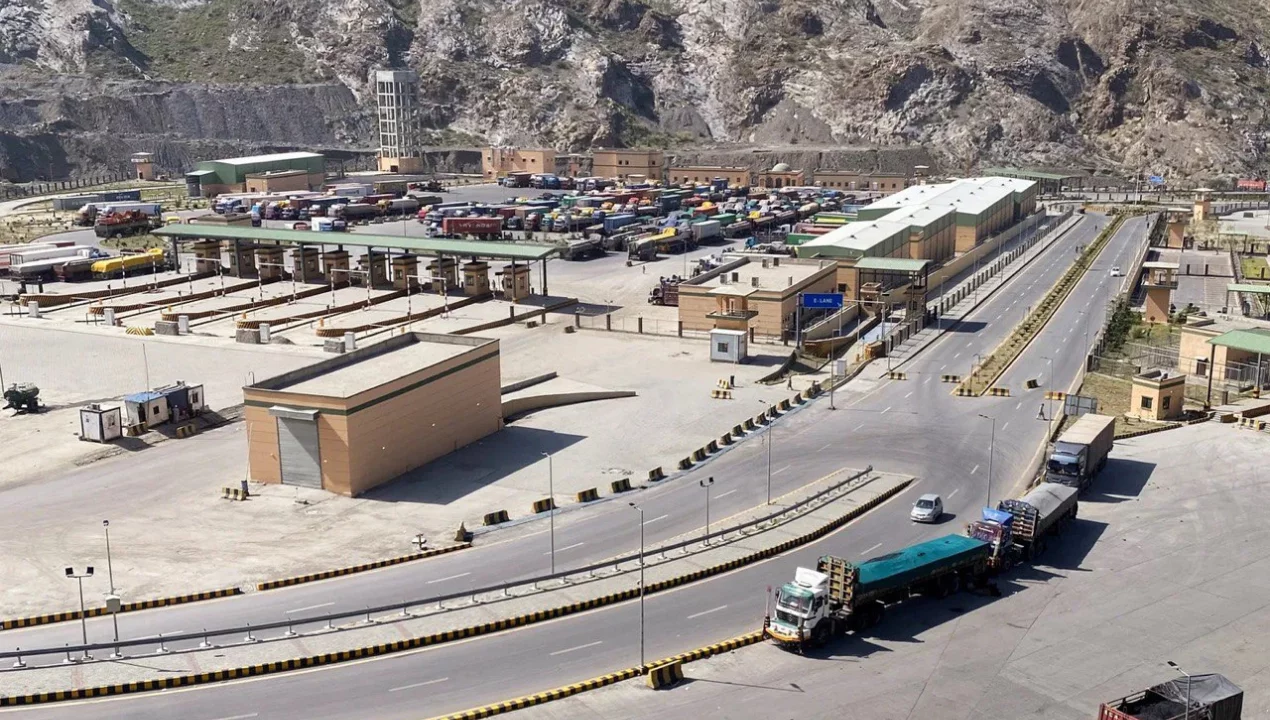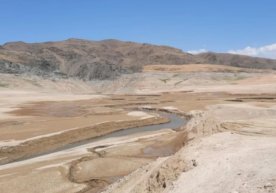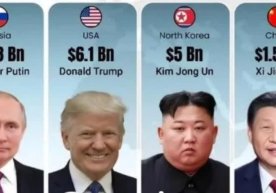
The border between Pakistan and Afghanistan, once a lifeline for livelihoods, trade, and essential supplies, has again become a focal point of tensions and devastating economic consequences.
Trade has come to a complete halt since October 11, when fighting broke out between the two sides.
Border crossings like Torkham, Ghulam Khan, Kharlachi, Angoor Adda, and Chaman—long serving as vital arteries for cross-border exchanges—not only restrict the movement of vehicles but disrupt the delicate equilibrium upon which millions rely.
Although nearly two weeks have passed since this deadlock began, its effects are increasingly resembling economic suffocation.
Pakistan, already staggered by inflation, climate crises, and fiscal fragility, is now suffering new and acute blows at the household level. In markets from Peshawar to Lahore, vegetables once considered ordinary are being treated as luxury goods on display behind glass.
Tomatoes, typically modest and ubiquitous in Pakistani kitchens, have suddenly soared as high as 600 PKR (2.14 USD) per kilogram. These figures not only reflect food inflation, but also a decline in the ability of low-income families to feed themselves decently.
Apples and other fruits, most of which are brought from across the Afghan border, have similarly disappeared from shops or have been priced out of reach for daily needs.
Consumers must settle for much less or pay considerably more. The longer the border remains closed, these shortages will only widen, threatening to carve deep economic wounds that will not easily heal.
Traders warn that the current backup of thousands of stranded cargo trucks could soon provoke an even wider shortage of essential foodstuffs such as rice, sugar, meat, medicines, and dairy products.
The border closure has become a display of helplessness. At Torkham alone, hundreds of vehicles stand idling on tarmac, engines off, while drivers sit as idle sentinels atop their loads, watching perishable goods rot in the heat.
Containers full of perishable items are slowly decaying, and what was once a hub of livelihood is turning into a wasteland. This is not merely a logistical delay. It is the spoilage of food at a time when families on both sides are struggling to find affordable meals for dinner.
According to calculations by business circles in Quetta, losses amount to about a million dollars per day. The nearly $2.3 billion in annual trade between the two countries has not only slowed, but seeped into the cracks of geopolitical discord.
With each sunrise, losses deepen for exporters, farmers, transport workers, and shopkeepers. What was once a mutually beneficial flow of goods now hangs in costly uncertainty.
Behind the economy lies the parallel story of individuals. Nearly 5,000 Pakistanis are stranded inside Afghanistan, unable to return home.
They wait for the opening of a border that now seems uncertain, counting the days amid ambiguity with no way back. Their limbo embodies the broader situation: trapped, anxious, and under a shadow of diplomatic coldness.
The timing of this crisis makes its consequences even harsher. Pakistan’s summer was marked by relentless floods that drowned fields, destroyed livestock, and wiped out entire pockets of rural life.
The Punjab province, historically tasked with feeding Pakistan, suffered significant agricultural failures.
Families in flood-hit regions are still struggling to recover, navigating a precarious existence between government aid, reduced incomes, and fluctuating prices. For them, the border closure is a second wave. What once felt like painful food inflation is now spiraling out of control.
The current dysfunction in bilateral relations between Islamabad and Kabul is not a sudden break, but a continuation of mistrust and periodic hostility that has defined recent years.
But diplomatic blows are no longer limited to press statements and meetings behind closed doors. Ordinary citizens, who neither created nor benefit from this escalation, are now forced to endure its effects—stretching their wallets, their resilience, and their capacity to cope.
The markets serve as the truest barometer of suffering. Today, they are screaming. The merchant watching his produce spoil witnesses waste on a scale he cannot bear.
The parent, forced to buy inferior vegetables, silently swallows dread for their family’s health. The worker, whose salary is frozen but whose food costs have soared, is dragged deeper into a crisis he did nothing to cause.
This is not just a vague line on an inflation chart. It is eroding household budgets and undermining social stability.
For a long time, cross-border trade with Afghanistan has supported communities that the state itself often overlooks. In places like Balochistan and Khyber Pakhtunkhwa, commercial movement across the border is not a supplement—it is central for survival.
The closure echoes oddly through these regions, showing just how deeply their economic fabric is tied to efficient relations with Kabul. When those links are cut, their very architecture of existence is directly endangered.
The wider consequences ripple even further. In Pakistan’s precarious economic situation, there is little room for another destabilizing force.
With scant foreign reserves, a crushing debt burden, and rising inflation, a border paralysis that raises prices and cuts off trade only sharpens an already dangerous situation.
In the chain reaction typical of crisis economies, rising prices for basic goods can ignite further disorder, drive deeper poverty, and dampen public morale.
Afghanistan is also suffering. Its access to food, medical supplies, and consumer goods is restricted as well.
But the sheer size of Pakistan’s population and the fragility of its economy make this temporary closure a special penalty box for its own citizens.
Each passing day brings new hardships that will not simply dissolve when the gates reopen.
The October 28th meeting of Pakistani and Afghan officials in Istanbul ended without resolution, prolonging the state of suspended misery.
Meanwhile, time continues to count losses, measuring deepening shortages not in rhetoric, but in kilograms and rupees.
In truth, the closure is a harsh reminder: the political decisions of states reverberate through the daily lives of their poorest citizens.
Border posts, once symbols of connection, now serve as fortresses dividing hunger from sustenance, and support from need.
The result is a brutal demonstration of just how rapidly vital economic interdependence can morph into collective vulnerability.
For now, vegetables continue to wither in stranded trucks and families keep shrinking their meals.
The expanding gap between what is necessary and what is affordable in the markets reflects ongoing disruption. It exposes the fragility of trust and cooperation between neighbors whose fates have become entangled—whether they admit it or not.
Read “Zamin” on Telegram!Users of Меҳмон are not allowed to comment this publication.














